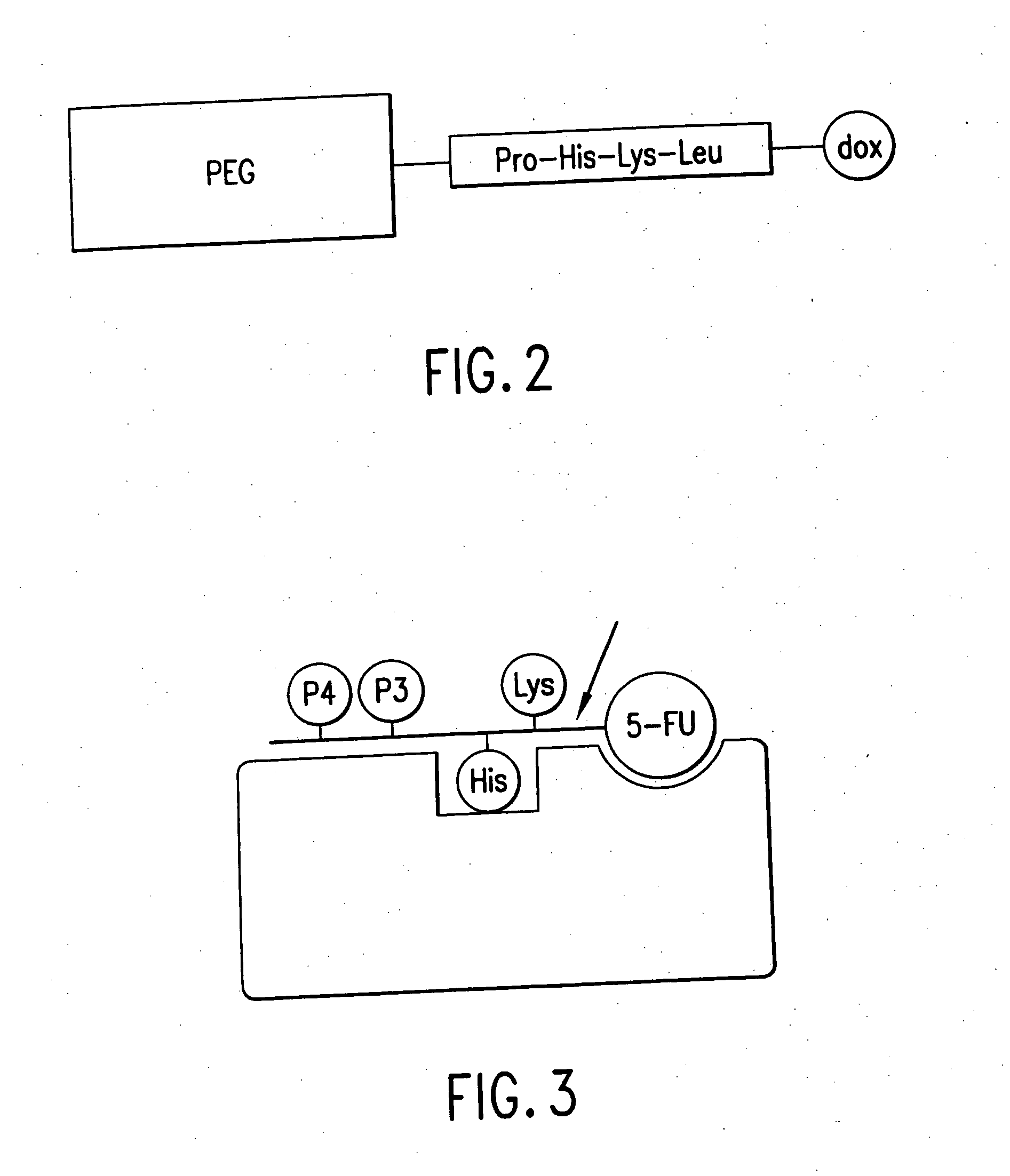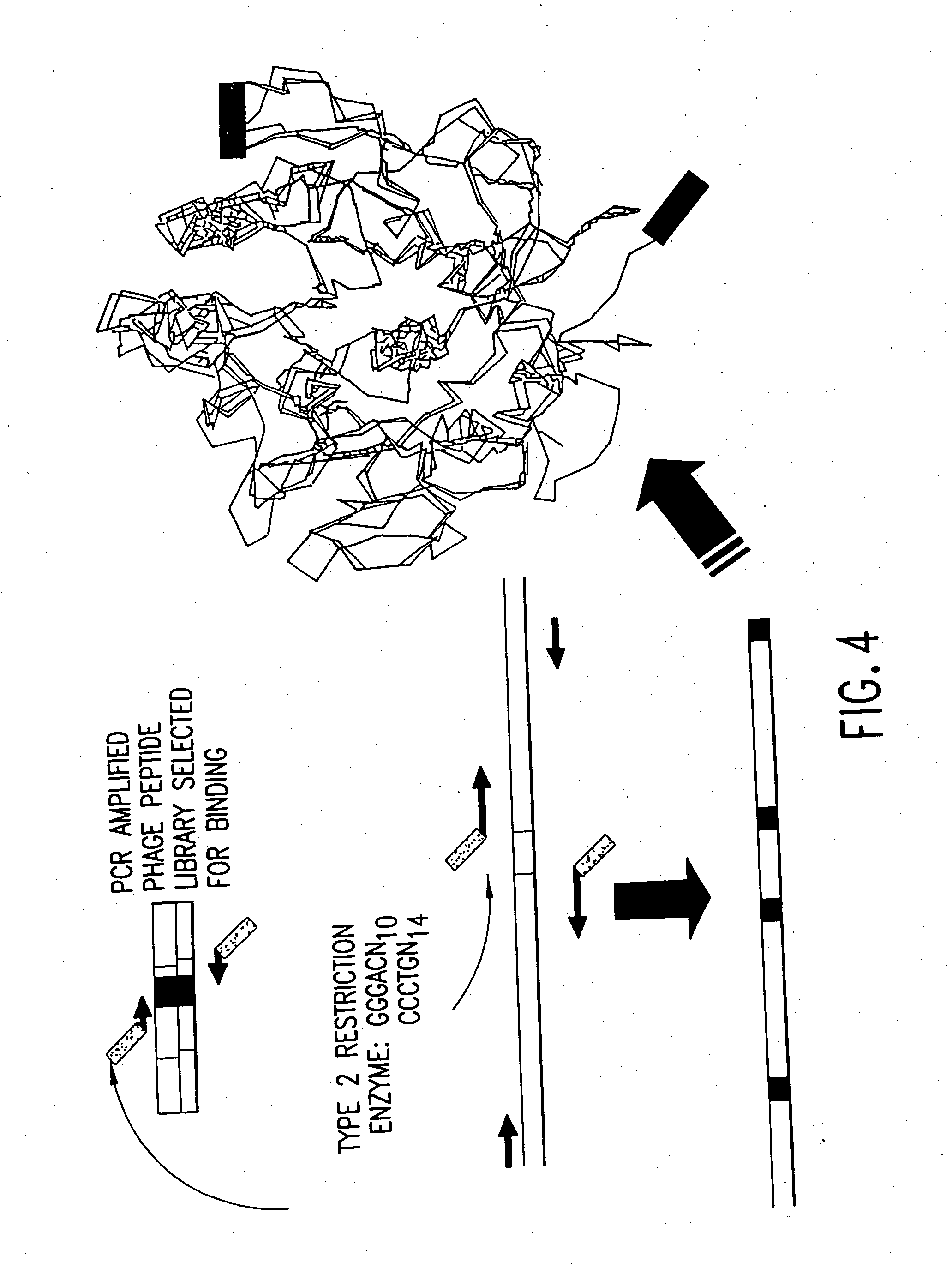Targeted enzymes
a technology of enzymes and target enzymes, applied in the field of targeted enzymes, can solve the problems of increasing the size of the target enzyme, so as to achieve rapid and complete clearance, reduce the effect of size and safety and efficacy
- Summary
- Abstract
- Description
- Claims
- Application Information
AI Technical Summary
Benefits of technology
Problems solved by technology
Method used
Image
Examples
example 1
Selection of Variable Loops in 1-Lactamase (BLA)
[0606] This example demonstrates that variation-tolerant sequences in a β-lactamase can be identified and replaced with repertoires of variant sequences.
[0607] The p99 β-lactamase of E. cloacae (pdb accession # 1BLS) has the sequence as illustrated in FIG. 1 with the 20 amino acid residue pro-sequence deleted. This structure was inspected manually to identify residues that appeared to be on the surface and not involved in defined secondary structure and these residues are in bold. Active site residues are marked with *. Loops at amino acid residues 116-127, and 295-306 are in the vicinity of the active site. The structure was compared to a close homologue 1GCE (69% homology) and there was no structural divergence at 1.5 Å. The structure was also compared to a remote homologue 1PTE (20% homology). The regions that were structurally unconserved are marked in italics. Various insertions and deletions are allowed based on this homology. ...
example 2
Expression and Purification of BLA
[0665] This example demonstrates that milligram quantities of targeted β-lactamase BLA) molecules made according to the invention can be expressed and purified.
[0666] Enzyme production was tested from 10 BLA variants that were chosen from the libraries pAL14P and pME20P. Some of the variants result in low BLA production at 37□C. This may be caused by proteolytic degradation. All clones produced at least 50% activity compared to the wild-type strain when the variants were grown at 25□C. Therefore most mutants, which confer ctx resistance, can produce sufficient enzyme for further analysis and to identify desired targeting characteristics.
example 3
Affinity Enrichment of Streptavidin-Binding BLA Variants
[0667] This example demonstrates that the methods of the invention can be used to created targeted β-lactamase enzymes that retain catalytic activity.
[0668] Preparation of Samples
[0669] Library Production: A 250 ml flasks filled with Terrific Broth (12 g / l bactotryptone, 24 g / l bacto yeast extract, 4 ml glycerol, 17 mM KH2PO4, and 72 mM K2HPO4)+50 ppm Kanamycin, was inoculated with a scraping of a frozen stock of the pAL16P1 library, serially diluted 1 / 26 and 1 / 676, and grown at 25□C, shaking at 280 rpm. Multiple dilutions were done to ensure proper harvest time at the initiation of stationary phase. Optical density was measured at 600 nm at 18 hours (measured 23.8). The remaining volume (˜21 ml) was harvested by centrifuging at 7 k rpm (˜4 k gravity) for 20 minutes and the supernatant fraction decanted. The pellet was resuspended in 4 ml buffer A (20% sucrose (m / v), 200 mM triethaolamine, 100 mM EDTA, pH=7) and rotated for ...
PUM
| Property | Measurement | Unit |
|---|---|---|
| molecular weight | aaaaa | aaaaa |
| molecular weight | aaaaa | aaaaa |
| average molecular weight | aaaaa | aaaaa |
Abstract
Description
Claims
Application Information
 Login to View More
Login to View More - R&D
- Intellectual Property
- Life Sciences
- Materials
- Tech Scout
- Unparalleled Data Quality
- Higher Quality Content
- 60% Fewer Hallucinations
Browse by: Latest US Patents, China's latest patents, Technical Efficacy Thesaurus, Application Domain, Technology Topic, Popular Technical Reports.
© 2025 PatSnap. All rights reserved.Legal|Privacy policy|Modern Slavery Act Transparency Statement|Sitemap|About US| Contact US: help@patsnap.com



